Top Image: President Harry S Truman signs the Atomic Energy Act of 1946. From left to right are Senators Tom Connally, Eugene D. Millikin, Edwin C. Johnson, Thomas C. Hart, Brien McMahon, Warren R. Austin, and Richard B. Russell. Courtesy of the Department of Energy Office of History and Heritage.
The May-Johnson Bill and its provisions for military oversight of nuclear policy jeopardized future research and development. Perhaps no group held more passionate views on these questions than, as one article proclaimed, “The Men Who Made the Bomb.” “Scientists were awesome creatures indeed to have built the bomb, men of limitless capacity to have harnessed such a colossal new source of energy and men almost from a different planet, politically speaking,” the article continued. But these same scientists feared that continued military regulation of research and development of atomic energy would signal to the world that the United States saw nuclear power as a weapon to be guarded instead of a new technology to be cooperatively cultivated for the advancement of humanity. Their deep-seated beliefs on the need for a new approach to the use of atomic energy inspired their political action following the war.
During the war, officials believed that long term military regulation of atomic energy was necessary for ensuring appropriate, defensive use of the bombs. In May of 1945, Secretary of War Henry Stimson established the Interim Committee (composed largely of military officials) to advise President Harry S. Truman on the development and use of the bomb. At the time, members of the Committee were already drafting legislation that would allow the military to continue to shape atomic research with little oversight from other agencies.
Meanwhile, Manhattan Project scientists sent a petition to Truman in July of 1945 urging him to consider that “[nuclear] attacks on Japan could not be justified, at least not unless the terms which will be imposed after the war on Japan were made public in detail and Japan were given an opportunity to surrender.” Atomic power provided great power, but “a nation which sets the precedent of using these newly liberated forces of nature for purposes of destruction may have to bear the responsibility of opening the door to an era of devastation on an unimaginable scale.” Even before Truman ordered the use of the bombs, the stage was set for a showdown between scientists and the military over nuclear power.
In the months leading up to and following the bombing of Japan in 1945, Special Assistant to the Undersecretary of the War General Royall and William L. Marbury, a private attorney consulted by the War Department, worked with the Interim Committee to craft legislation that would ensure maximum security and military control long after the war ended. Their work culminated in a message sent to Congress directly from Truman on October 3, 1945 urging support for a bill introduced by Representative May and Senator Johnson that would provide more civilian control of atomic energy. However, many were surprised that the bill was not approved by the Bureau of the Budget or any other agencies or departments for approval before being presented to Congress for expedited voting. They would soon see why.
The bill sailed through the House with May’s support, but was held up in the Senate because certain provisions appeared to be backdoors to continued military influence on atomic decision making. For example, the proposed Atomic Energy Commission would be staffed by a full-time Administrator and Deputy Administrator. These powerful positions were meant to be filled by civilians, but under certain circumstances (security threats declared by the president) could be presidential military appointees—creating the potential for a military-dominated civilian oversight body.
Opponents also found the bill’s only vague references to peaceful uses of atomic energy unsettling. A group of physicists, scientists, and workers from Chicago, Oak Ridge, Tennessee, Los Alamos, and other laboratories argued that “the directives contained in the bill admonishing the commission and the administrator to use their broad and undefined powers for the promotion of general welfare and the advancement of science are unimplemented. No method is provided for their enforcement.” Without clear guidance, it would be easy for a Commission influenced by the military to continue to see atomic energy as an instrument of war rather than one of progress.
The final straw for scientists, however, came when May only allowed one day for public hearings. On October 9, Congress heard from scientists closely aligned with the War Department and military. General Leslie Groves, who served as the leader of the Manhattan Project, was one of the key testifiers for a bill that would potentially allow continued military oversight of nuclear power. Dr. Isaiah Bowman, a physicist from Johns Hopkins University, argued that “the war is not over, only the military phase of it,” indicating at least some support for viewing atomic energy as a defense measure.
“There is still a need for preparedness in a world not yet gentled to the ways of peace,” he explained. Similarly, Dr. Vannevar Bush, Director of the Office of Scientific Research and Development, agreed that while there was a justifiable “urge to prevent wars…for we have just emerged from a terrible war” among some scientists, this was a “nationalistic world,” where “all peoples will seek to attain an equal footing with respect to anything so powerful as atomic energy.” Bush leaned toward a “suitable domestic control legislation” since “the present state of world affairs demands a strong United States.” Even Robert Oppenheimer, “father” of the atomic bomb, did not immediately see any pressing issues with the proposed bill.
But other scientists who had worked on the Manhattan Project including Edward Condon, Leo Szilard, and Harold Urey argued that limiting hearings to one day was a “shocking abuse of legislative discretion.” Armed with their objections and a desire to voice their professional opinions, Szilard and others descended upon Washington to meet with a caucus of Congressional representatives. They formed organizations and called upon the public to assist them in their fight for more extensive hearings.
Dr. Leo Szilard (second from right in the white coat) with scientists from the Chicago Metallurgical Laboratory at the University of Chicago, December 2, 1946. Courtesy of the Los Alamos National Laboratory.
Fortunately for the scientists, the public generally supported them. Politically active scientists were a rarity for most Americans, and to hear them speak so passionately on the need for not only a shift from military to civilian governance, but also a transition from a secretive nuclear policy to one of international cooperation made sense in the new Atomic Age. Americans were uninterested in another global conflict—one that would undoubtedly be deadlier. The Veterans of Foreign Affairs, the Farm Bureau, and the General Federation of Women’s Clubs joined the League of Women Voters and the Congress of Industrial Organization in supporting the scientists and the push for civilian control of atomic power.
Those seeking legislative action formed the Emergency Conference for the Civilian Control of Atomic Energy and the scientists themselves formed the Federation of Atomic (later American) Scientists in Washington DC, outfitted with a small office and one secretary. Recognizing the public support of this scientific front, Democratic representative from California Helen Gahagan Douglas declared,
“The future of the world hangs on how this new energy is used. This bill affects our relations with every nation in the world. The American people must know more before their representatives act.”
Helen Gahagan Douglas
The public and political pressure worked; Mays agreed to add a day of additional hearings on October 18. Szilard and Dr. H. L. Anderson (a physicist who worked on the Manhattan Project at the Metallurgical Laboratory at the University of Chicago) testified that “they feared the measure was too stringent and would keep young scientists out of the atomic field.” Under the bill, the Atomic Energy Commission would “have sole custody of all raw materials and deposits, all plants, facilities, equipment and materials, all technical information and patents and all contracts and agreements related to the production of fissionable materials.”
This meant that anyone who worked on any element of nuclear energy in a lab would be fined up to $100,000 or imprisoned for up to five years for sharing any atomic information. Not only did this inhibit research, it also eliminated the option to share findings with allies and other scientists around the world. Freed of politics and defense decisions, scientists believed it was their duty to build an international community looking to ensure a diplomatic and peaceful approach to nuclear power; this was the only way to handle such an awesome source of energy. The May-Johnson Bill hampered the scientific process and jeopardized a reasonable, global approach to nuclear policy. The scientists argued that the bill colored nuclear policy as one shaped by defense and war rather than research and shared responsibility.
Szilard also shared a petition from the Chicago and Oak Ridge scientists with the Military Affairs Committee. The Atomic Scientists of Chicago and the Association of Oak Ridge Scientists regarded the bill as a deterrent to future scientific inquiry. “Neither the commission nor the administrator are responsible in the making of enforcement of policy to the President or any other authority…virtually immune from outside criticism or review because their security regulations may prevent the disclosure of the actions of policies subject to criticism,” they explained. Revaluation, experimentation, and analysis were key components of the scientific process and the May-Johnson Bill severely limited these crucial steps.
Between the testimony and public outcry, even Truman became convinced that the May-Johnson Bill clashed with expert opinion. Truman’s assistant, John W. Snyder (then Director of the Office of War Mobilization and Reconversion), offered an analysis of the current bill, listing its negatives (it did not emphasize further research into peaceful applications of atomic energy) and explaining that a good bill would be founded upon scientific ideas and expertise. Truman withdrew his support for the May-Johnson Bill, prompting a Senate Special Committee on Atomic Energy (advised by Dr. Condon) to spend most of November and December learning the ins and outs of physics and the potential uses of atomic energy—with the help of scientists this time.
By early January, the committee had crafted a new bill sponsored by Connecticut Senator Brien McMahon that emphasized the civilian agencies’ role in regulating nuclear power. The bill also struck a balance between peaceful and defensive uses of the bomb, stating that “subject at all times to the paramount objective of assuring the common defense and security, the development and utilization of atomic energy shall…be directed toward improving the public welfare, increasing the standard of living, strengthening free competition in private enterprise, and promoting world peace.”
The McMahon Bill also called for five civilian commissioners on the Atomic Energy Commission (AEC) with control over the production of fissionable material and the production and storing of nuclear weapons—a move that angered Groves who was disappointed that the military would have such a small role in regulating atomic weapons. The Senate would amend the McMahon Bill after hearings in late January to create a Military Liaison Committee with representatives from the War Department and the Navy (helping to assuage some military opposition to the bill). The final version of the McMahon Bill also included a provision that the president could “from time to time” order the commission to “deliver weapons to the armed forces for such use as he deems necessary in the interest of national defense.”
The first five Atomic Energy Commissioners at Los Alamos in 1947. Left to Right: Robert F. Bacher (nuclear physicist of the Manhattan Project), David E. Lilienthal (lawyer and former head of the Tennessee Valley Authority), Sumner Pike (former member of the US Securities and Exchange Commission), William W. Waymack (former chairman of the Economic Policy Committee), and Lewis L. Strauss (officer in the rear admiral in the navy who established the Office of Naval Research). Courtesy of the Los Alamos National Laboratory.
Though the military was able to apply pressure, the scientists succeeded in their broader mission. Not only were the restrictions on the sharing of scientific knowledge and nuclear discoveries relaxed, but the AEC implemented a national laboratory system for continued research into using atomic energy for projects like drilling and mining. Rising Cold War tensions would make international governance of atomic energy virtually impossible, but scientists had raised important questions about the need for controlling such a lethal form of power in a way that went beyond national interests.
On August 1, 1946 Truman signed the Atomic Energy Act, ensuring that control over atomic energy would transfer from the Manhattan Engineer District to the civilian Atomic Energy Commission on January 1, 1947. The battle over who should control atomic research—civilians or military leaders—shaped the Atomic Energy Act of 1946, but it was, as a legal scholar later explained in 1948, the “Men Who Made the Bomb” and “political unknowns,” “mostly young, forceful, and hopeful men and women dealing with old and tired legislators of new ideals, earnest and sure of their subject in contrast to Congressional fear and uncertainty,” who held political sway. They “matched their energy and capacity to the opportunity,” becoming “a major political factor in the formulation of atomic energy legislation.”
This article is part of a series commemorating the 75th anniversary of the end of World War II made possible by the Department of Defense.
Stephanie Hinnershitz, PhD
Stephanie Hinnershitz is a historian of twentieth century US history with a focus on the Home Front and civil-military relations during World War II.
Cite this article:
MLA Citation:
APA Citation:
Chicago Style Citation:
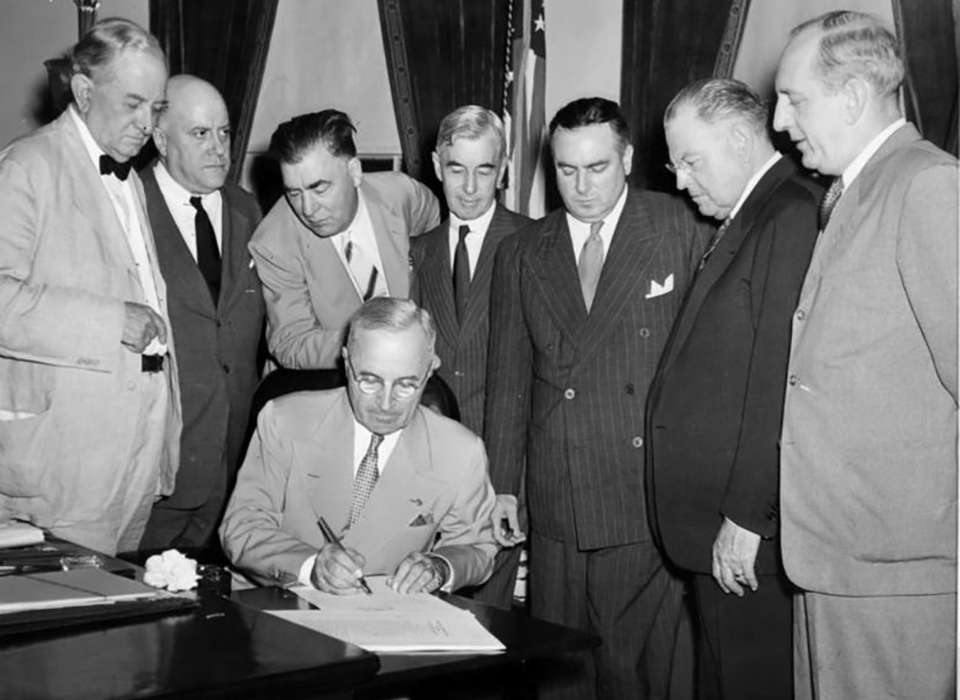
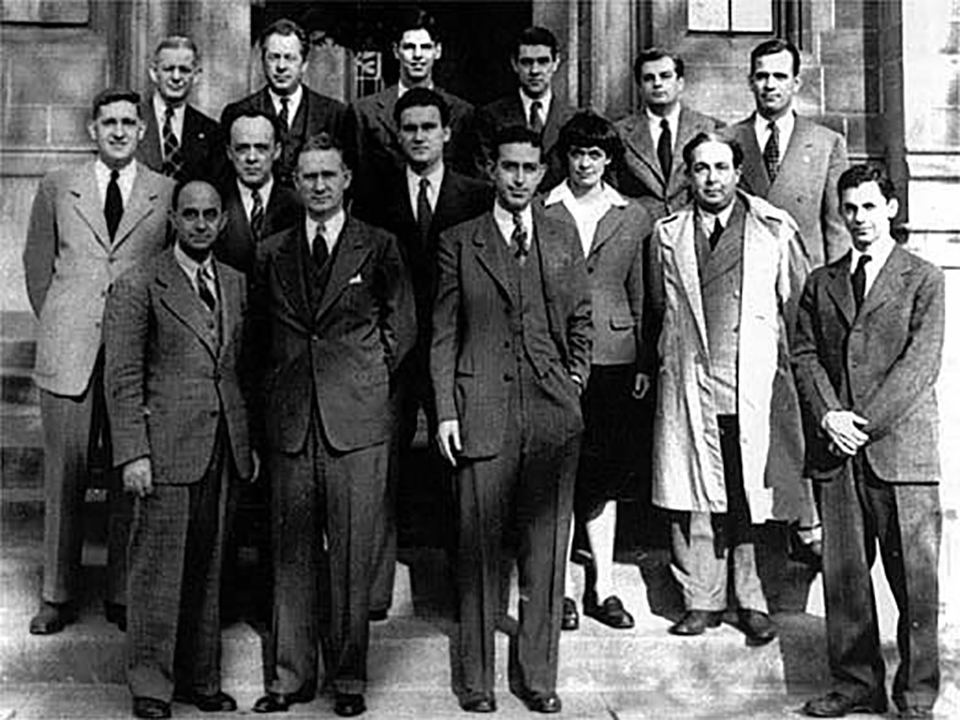
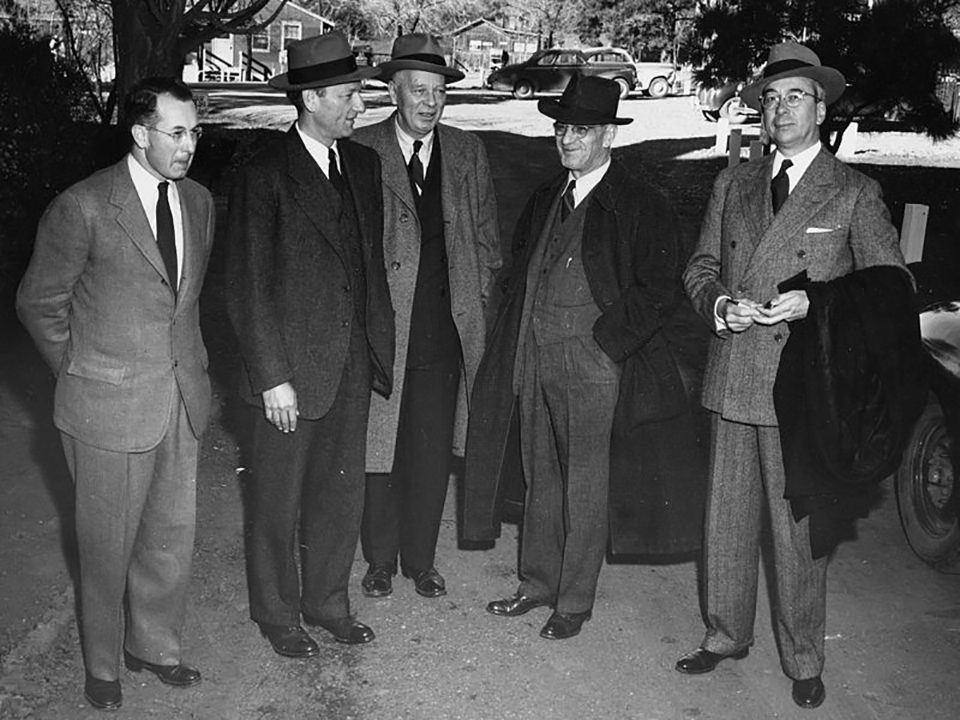
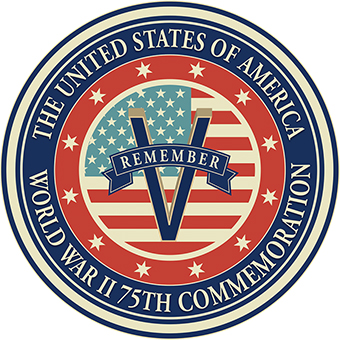
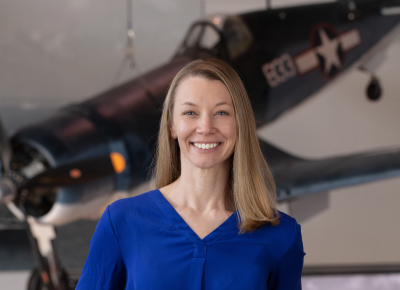

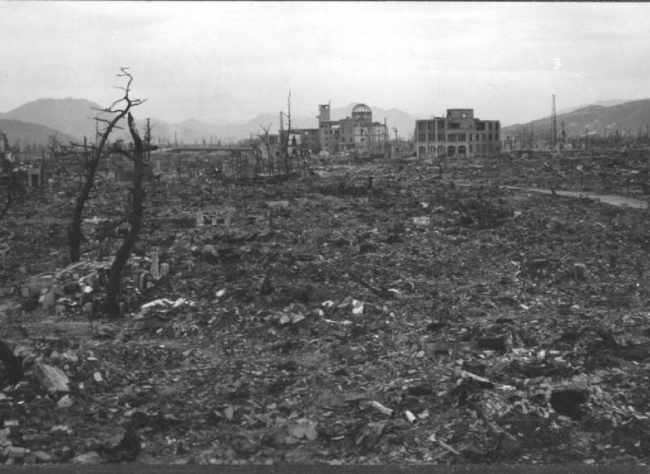
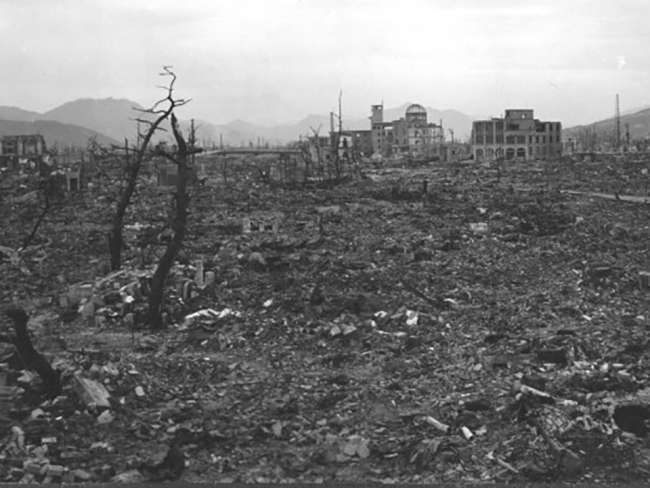
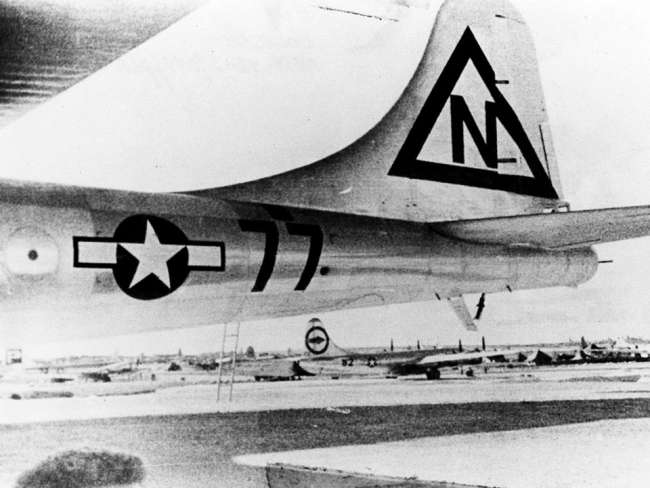




![Max Fuchs, New York City cantor, sings as Rabbi Sydney [sic] Lefkowitz, Richmond, VA, conducts the first Jewish services from Germany.](/sites/default/files/styles/max_650x650/public/2025-10/image1.jpg)


